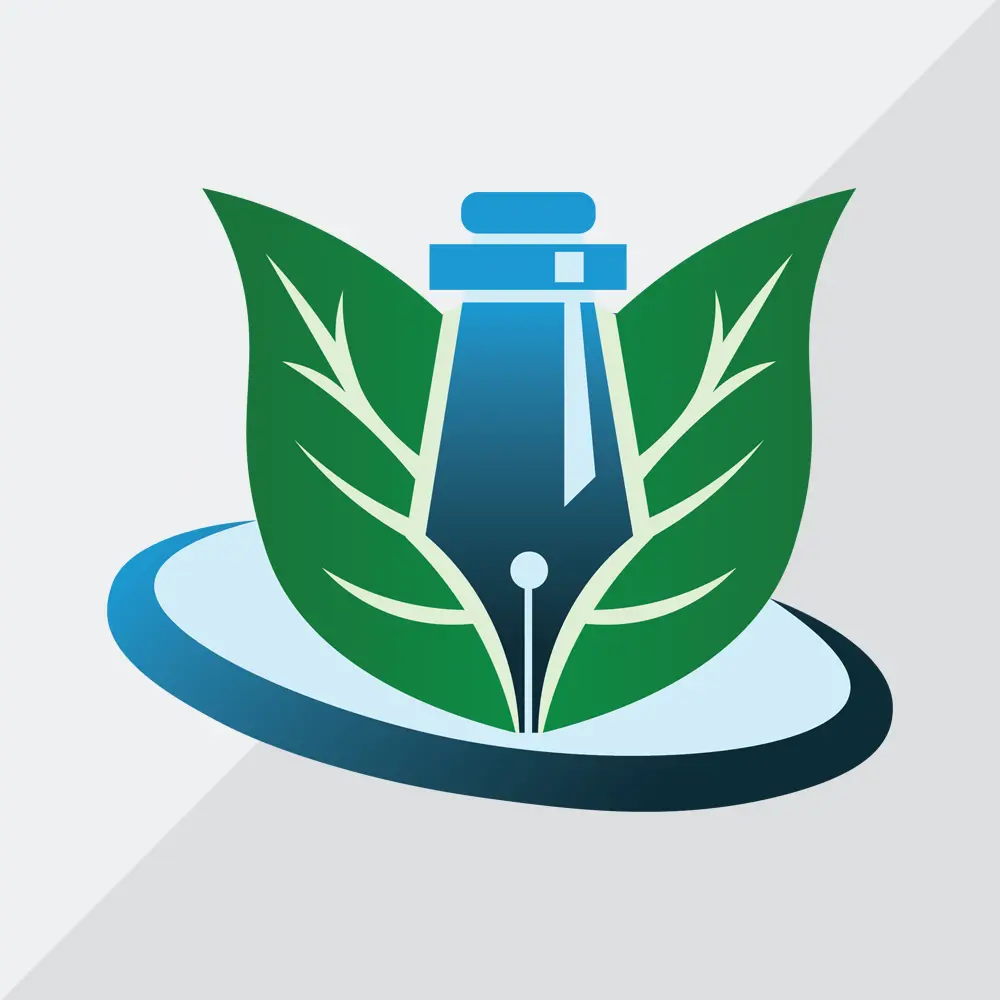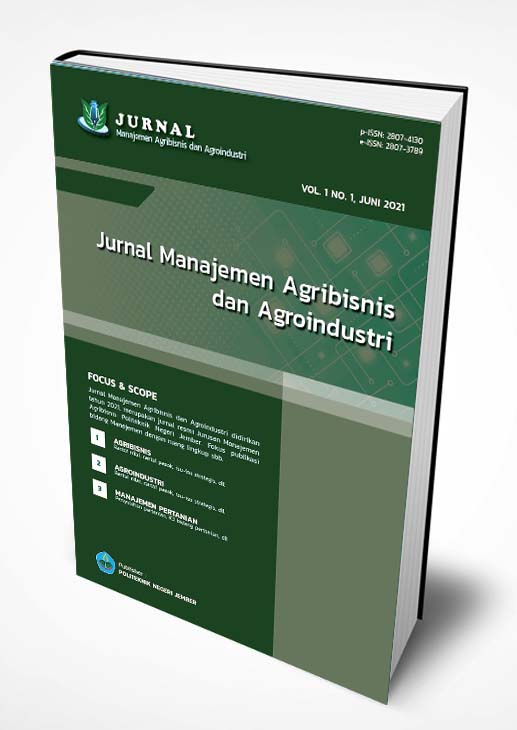Analysis of The Application of Good Manufacturing Practice (GMP) in The Production Process of Butterfly Pea Flower Syrup (Clitoria Ternatea L.) at UMKM Bu Karno, Jember Regency
DOI:
10.25047/jmaa.v4i2.102Downloads
Abstract
The implementation of the Good Manufacturing Practice (GMP) program is a key effort by the company to ensure a safe food system for consumers. This research aims to identify and analyze the aspects of GMP implementation at UMKM Bu Karno, following the standards set by the Regulation of the Minister of Industry of the Republic of Indonesia Number 75 of 2010. Additionally, it provides recommendations for improvements to meet GMP requirements and enhance the effectiveness of its implementation. The research employs a qualitative descriptive method. The population consists of UMKM Bu Karno, with samples taken from business owners and experts in relevant fields. Data identification and analysis were conducted through questionnaires filled out using a checklist, with data analyzed using Gap Analysis for each aspect of GMP implementation. The processed data revealed an average total percentage of 70.06%, indicating that the GMP program at UMKM Bu Karno requires further improvement to fulfill GMP standards and enhance its effectiveness. The company should also consider the provided improvement recommendations to elevate the quality of GMP program implementation.
Keywords:
GMP Pea Flower Syrup UMKMReferences
[1] M. P. R. Indonesia, Pedoman Cara Pembuatan Makanan yang Baik (CPOB) dalam Produksi Makanan Olahan. Jakarta, Indonesia: Peraturan Menteri Perindustrian Republik Indonesia, 2010.
[2] H. Thaheer, HACCP (Hazard Analysis Critical Control Points) Management System. Jakarta: Bumi Aksara, 2005.
[3] E. C. Purba, “Kembang Telang (Clitoria ternatea L.): Pemanfaatan dan Bioaktivitas,” J. Pendidikan, Mat. dan Sains, vol. 4, no. 2, 2020, doi: https://doi.org/10.33541/edumatsains.v4i2.1377.
[4] BSN, “Indonesian National Standard (Syrup),” Jakarta, 2013.
[5] BPOM, “Procedures for Inspection of Household Food Production Facilities,” Jakarta, 2012.
[6] Sugiyono, Statistics for Research. Bandung: Alphabetta, 2017.
[7] Marimin, Teori dan Aplikasi Sistem Pakar dalam Teknologi Manajemen. Bogor: IPB Press, 2005.
[8] A. Rianti, A. Christopher, D. Lestari, and W. El Kiyat, “Penerapan Keamanan Dan Sanitasi Pangan Pada Produksi Minuman Sehat Kacang-Kacangan Umkm Jukajo Sukses Mulia Di Kabupaten Tangerang,” J. Agroteknologi, vol. 12, no. 2, 2018, doi: https://doi.org/10.19184/j-agt.v12i02.9283.
[9] A. F. S. Admaja, “Study of The Directorate of Standardization Readiness in Implementing SNI ISO/IEC 17065,” Bull. Post. Telecommun., vol. 11, no. 3, 2013.
[10] A. Bakhtiar and B. Purwanggono, “Analisis Implemenntasi Sistem Manajemen Kualitas ISO 9001:2000 dengan Menggunakan Gap Analysis Tools (Studi Kasus di PT PLN (Persero) Pikitring JBN Bidang Perencanaan),” J@ti Undip J. Tek. Ind., vol. 4, no. 3, 2009, doi: https://doi.org/10.12777/jati.4.3.163-170.
[11] Ngatirah, E. A. Nugroho, and Sunardi, “Evaluasi dan Rekomendasi Pemenuhan Cara Produksi Gula Jahe Yang Baik Pada Industri Rumah Tangga Pangan,” JMM (Jurnal Masy. Mandiri), vol. 5, no. 6, pp. 3567–3575, 2021, doi: https://doi.org/10.31764/jmm.v5i6.5647.
[12] Warkoyo, Damat, and S. Winarsih, “Dampak Penerapan GMP dan SSOP terhadap Kualitas Minuman Kunyit Asam SMUD SMK Muhammadiyah 2 Malang,” J. Akses Pengabdi. Indones., vol. 4, no. 1, 2019, doi: https://doi.org/10.33366/japi.v4i1.1121.
[13] R. Purwasih, “Implementasi Aspek GMP, SSOP, dan Sistem HACCP pada UMKM Oncom Dawuan,” J. Teknol. Ind. Pertan., vol. 15, no. 1, 2021, doi: https://doi.org/10.21107/agrointek.v15i1.6837.
[14] S. Farisi and M. I. Rasyid, “Penerapan Good Manufacturing Practices pada Usaha Sirup Pala di Kabupaten Aceh Selatan,” J. Sos. dan Teknol., vol. 2, no. 5, 2022, doi: https://doi.org/10.59188/jurnalsostech.v2i5.335.
[15] P. K. Mukherjee, V. Kumar, N. S. Kumar, and M. Heinrich, “The Ayurvedic medicine Clitoria ternatea—From traditional use to scientific assessment,” J. Ethnopharmacol., vol. 120, no. 3, 2008, doi: https://doi.org/10.1016/j.jep.2008.09.009.
[16] Y. T. Hapsari and Kurniawanti, “Pendampingan Penerapan Good Manufacturing Practice (GMP) Pada Usaha Jamu,” J. Abdimas Madani Dan Lestari, vol. 4, no. 2, 2022, doi: https://doi.org/10.20885/jamali.vol4.iss2.art6.
[17] N. Juliana and W. O. Megasari, “Analysis Quality of Tofu the Application of Good Manufacturing Practice (GMP) Home Industry UD. Sari Makmur Wakobalu Village,” J. Kesehat. Masy., vol. 11, no. 2, 2021, doi: https://doi.org/10.56338/pjkm.v11i2.2021.
License
Copyright (c) 2024 Fauzan Nugroho, Naning Retnowati

This work is licensed under a Creative Commons Attribution 4.0 International License.
You are free to:
- Share — copy and redistribute the material in any medium or format for any purpose, even commercially.
- Adapt — remix, transform, and build upon the material for any purpose, even commercially.
The licensor cannot revoke these freedoms as long as you follow the license terms.
Under the following terms:
- Attribution — You must give appropriate credit, provide a link to the license, and indicate if changes were made. You may do so in any reasonable manner, but not in any way that suggests the licensor endorses you or your use.
- No additional restrictions — You may not apply legal terms or technological measures that legally restrict others from doing anything the license permits.
Notices:
You do not have to comply with the license for elements of the material in the public domain or where your use is permitted by an applicable exception or limitation.
No warranties are given. The license may not give you all of the permissions necessary for your intended use. For example, other rights such as publicity, privacy, or moral rights may limit how you use the material.






